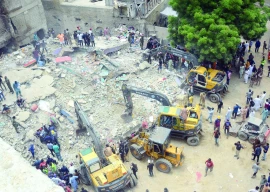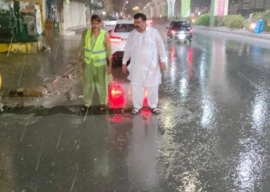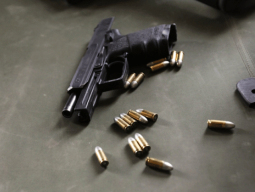
Although the Balochistan chief minister might not have seen either of the two studies, he seems to have responded to the popular notion that poverty drives war and so offered jobs to the Baloch insurgents in the mountains. He has asked them to come down from their hideouts, lay down arms and that they will get jobs and a state pardon. What a chance for people like Dr Allah Nazar to make peace, get a cushy job as a senior executive in a pharmaceutical company and live life happily ever after. However, there are flaws in Aslam Raisani’s offer and the underlying argument that links poverty with militancy.
First, assuming that poverty was the main driver to have sent the Baloch up the mountains to resist the state, what is the mechanism for them to return given the fact that there is a huge trust deficit between the insurgents and the state? The fact of the matter is that the federal government has failed to honour its own initiatives in the form of the Mushahid Hussain and the Chaudhry Shujaat Hussain missions. In fact, the state went ahead and killed Nawab Akbar Bugti even after pretending to talk. Today, there is no single neutral arbiter that both sides would trust.
Second, how can trust begin to develop as long as Balochistan is being flooded by other kinds of violent agents of the state like the Lashkar-e-Jhangvi (LeJ) and the Jamaatud Dawa (JuD). The LeJ, in particular, is going around killing the Hazaras and sowing seeds of discontent in a land where different communities did coexist much more peacefully in the past. The formula that one kind of militant may be allowed and not the other is not going to impress anyone.
Third, the poverty-violence nexus is very linear. I was reminded of a study carried out in the 1990s by a British-American strategic thinker, Colin S Gray, in which he argued that weapons did not make war. The idea was to question a popular notion that once weapons are created they tend to generate propensity for war. But the more important issue was not to look at war simplistically as a product of a single element. Fortunately, the PIDE study by Sadia Mariam Malik admits that the formula used in the study is linear.
If poverty and landlessness were the two main drivers then it surely doesn’t explain why militants are constantly being recruited from Punjab, which is the granary of Pakistan. It doesn’t explain why the mid-tier leadership of the militant outfits based in Punjab is from the middle class. There is a need to differentiate between the causes of conflict and violence. For instance, the LeJ in Balochistan does not kill because people are poor but due to their inherent ideology to target Shias and create dissent in the area.
This is not to argue that poverty does not have any impact. In Punjab, for instance, the proliferation of madrassas is connected with poverty. Surely, in other provinces, too, people would be sending children to religious seminaries to solve the problem of free boarding and lodging for their children. However, there are other factors used to motivate people to fight. The exhibition of photos and videos of dead bodies of Muslim men and women in Palestine, Kashmir, Myanmar and other places along with the message that it is God’s duty towards its people to protect these people becomes a driver.
Many police investigators argue that the jihadis from Punjab are the most rabid and brutal. These young warriors are incensed by the brutality towards sister and brother Muslims whom they have never seen or met. Interestingly, we have greater sympathy with this formulation than the idea that a lot of those fighting the state in Balochistan are angered by the brutality towards their kith and kin. Using simplistic methodologies like a poverty-violence linear linkage, we comfortably ignore the fact that the insurgent base at the moment comprises a middle class that was brutalised to a point that they were forced to take up weapons against the state.
The application of the above theory in Balochistan is problematic also because it does not take into consideration the fact that Balochistan is not this single-monolithic whole. The province can be divided into three: (a) a Pashtun area, (b) a Baloch area that includes places such as Dera Bugti, Kohlu and others that I call the ‘heartland’, and (c) a Baloch area along the Makran coastal belt. The Pashtun area is generally more peaceful and more developed than the other areas. The problem with the Baloch heartland, which is tribal, is not just its tribal legacy but also the fact that the state has continuously supplied weapons and strengthened the traditional patronage-based system that it proposed to replace. This means that conditions continue to be the same. The heartland is also the area where the LeJ and others are making way. This means that violence as a means of negotiating violence will persist.
The coastal belt is totally another place. This is an area where the idea of Pakistan was not dominant even in 1947 as it was in Lahore, Karachi or other places. Sadly, the state never ventured to showcase Pakistan as a positive formulation. Moreover, the battle that was waged around 2006 has not endeared the state to ordinary people. When the FC jawans enter houses and brutalise people in hot pursuit, poverty alone does not matter.
It is also a fact that years of violence have stripped most Baloch area of any socioeconomic development potential. The Baloch middle class, which does not want to be part of this battle, has moved away to other places. Here is a case of war creating poverty and not the other way around.
Published in The Express Tribune, December 5th, 2012.


















COMMENTS
Comments are moderated and generally will be posted if they are on-topic and not abusive.
For more information, please see our Comments FAQ